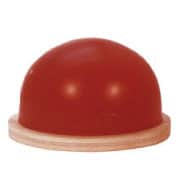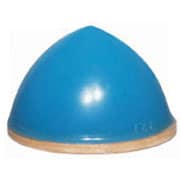Tech Tip Tuesdays: Frequently Asked Pad Printing Pad Questions?
Comments Off on Tech Tip Tuesdays: Frequently Asked Pad Printing Pad Questions?How long should my pad printing pad last?
Depending on how “rugged” a surface you’re printing on, a pad should last between 50,000 and 100,000 impressions. Improper use, careless machine operation or stray grit however, can decrease the pad’s life.
What should i watch for when I’m pad printing?
Make sure your substrate is free of sharp particles and debris. Avoid printing on sharp edges, which can puncture the pad. Use as little pad pressure (downstroke) as you can to pick up and deposit your image. (Tip: Too light an image could be an improperly etched cliche’)
What causes the most damage to pads?
Overly aggressive solvents, mechanical damage, poor storage practices, dirt/dust/debris and careless use are the most common causes of damage to pads. Additionally, some inks have aggressive solvents as part of their mix that will be absorbed by the pad and cause the image to “spread” on the pad. This isn’t permanent, as the solvent will evaporate if warmed or left to stand.
How should I clean my pad?
The best way to remove ink and debris from your pad surface is with regular packing tape. You may also use a mild solvent, such as alcohol. Always clean your pad before starting a printing job and never use a sharp object on your pad.
What is the best way to store my pad?
If a pad arrives in a protective shell or with a protective cover, remove it and do not reuse. It could trap grit and debris that can damage the pad. Never store a pad on top of or compressed against another pad. Handle and store your pads carefully.
What’s the nest way to extend my pad’s life?
We sell 8 oz. bottles of Pad Rejuvenator (Ask for Part Number PAD OIL when you call our customer service department.) The other way we recommend extending a pad’s life is to have two pads that you alternate one shift on, one shift off, to “rest” the pad and let it restore to its uncompressed state.
How do I prevent pad wear?
Correct design and tooling of fixtures will help eliminate pad wear … a major cause of image distortion.


 An important variable to consider in quality pad printing is the pad size, especially as it relates to the image size. In pad printing, the larger the pad size used, the less the image is likely to distort in the printing process.
An important variable to consider in quality pad printing is the pad size, especially as it relates to the image size. In pad printing, the larger the pad size used, the less the image is likely to distort in the printing process. Two solutions to this problem are available:
Two solutions to this problem are available: